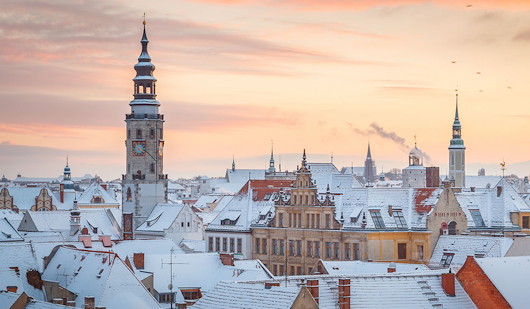2017 January
About Andrew Cusack
 Writer, web designer, etc.; born in New York; educated in Argentina, Scotland, and South Africa; now based in London.
Writer, web designer, etc.; born in New York; educated in Argentina, Scotland, and South Africa; now based in London. read more
News
Blogs
Reviews & Periodicals
Arts & Design
World
France
Mitteleuropa
Knickerbockers
Argentina
The Levant
Africa
Cape of Good Hope
Netherlands
Scandinavia
Québec
India
Muscovy
Germany
Academica
The Crown of Stars
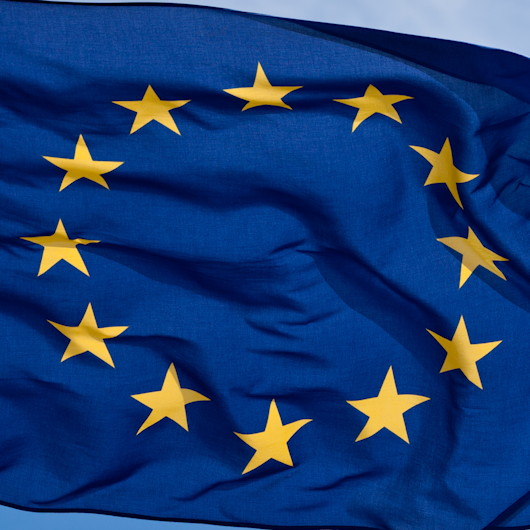
Following the horrors of the Second World War, there was a concerted effort to re-Christianise Europe, to ensure that the horrors inflicted by nationalist and Marxist socialism would never be repeated. For a time, statesmen like Konrad Adenauer in Germany and Alcide de Gasperi in Italy actually had remarkable success in promoting a Christian Democracy in which the sovereignty of Almighty God and the sanctity of human life, which carries the Image of God, were considered sacrosanct.
On the Feast of the Immaculate Conception 1955, the new flag of the European Union was inaugurated, emblazoned with twelve stars on a blue background. Its designer, Arsène Heitz, later disclosed that the stars represent the halo seen in images of Our Lady. After his first design incorporating the Cross had been rejected as too overtly Christian, Heitz was happy to take his inspiration from a picture of the Immaculate Conception.
At that time, there seemed to be so much promise for a Christian future in Europe — a future in which all human life at every stage of its existence, from conception to death, would be considered sacred and inviolable, thanks to that indelible Image of God emblazoned on every human soul.
— Fr Julian Large, Cong. Orat.
So preached the Provost of the London Oratory during a stirring sermon to, as usual, a packed church one Sunday in 2013.
Of course, as Fr Julian correctly continued, “then something seemed to go badly wrong”, but it would take a volume to transcribe the numerous missteps and mistakes in the process of attempting European political unity.
Still, one would need to be blind not to acknowledge some of its accomplishments, among which I would count the European flag the genesis of which Fr Julian describes. The design is both simple and dignified which is amply attested to by the ease with which it has been deployed to myriad purposes.
While later adopted and used by the European Union (and its predecessors, the EEC and EC) it was actually created earlier in 1955 by an entirely separate organisation, the Council of Europe. The Strasbourg-based body still holds the copyright to the European flag and includes among its members many parts of Europe and beyond that are not part of the EU, viz. Russia, Denmark’s Greenland, Turkey, and parts of the Caucasus.
As Great Britain’s membership of the European Union draws to a close, it is some reassurance that we can still claim the European flag as our own, not just vaguely as a European country, but even legally as a Council of Europe member state. Just as one mustn’t surrender the Cross of St George to be waved only by football hooligans and racists, nor must we allow the Crown of Stars to be monopolised by ‘remoaners’ with blind faith in ever-centralising and ever-more-remote institutions.
One hopes that, in time, whatever negative connotations the European flag may have had amongst some will fade into the past as Britain takes her natural place as the bridge connecting Europe and the rest of the world.
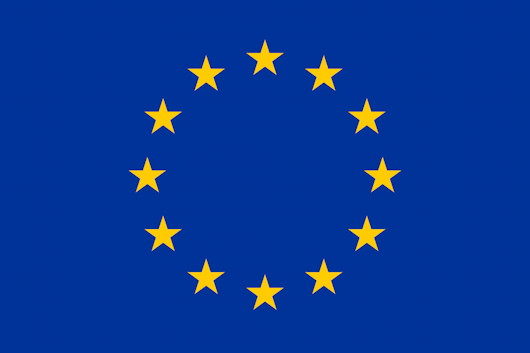
The Queen
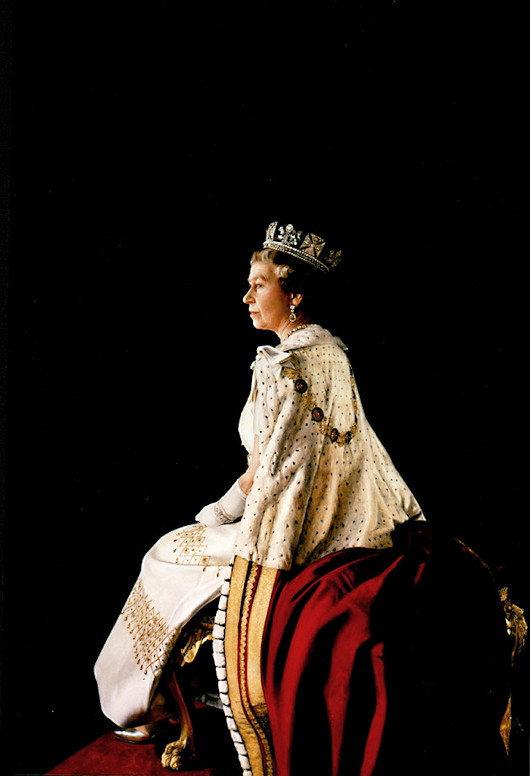
1992; Oil on canvas, 96 in. x 60 in.
Floating an Idea for Parliament
Members of Parliament are currently battling one another over plans for the ‘restoration and renewal’ of the Palace of Westminster. One side, backed by management consultants and the Joint Committee report, say the whole place has to be shut down completely for years starting in 2020. The other, led by Sir Edward Leigh MP and Shailesh Vara MP, says if work is so urgent it should start immediately, but that both the Commons and the Lords should continue to meet within the Palace, preserving centuries of tradition and keeping up the dignity and ceremony for which Great Britain is known.
With ideas flowing back and forth, outsiders to the Westminster bubble have put forth their own ideas — the architect Anthony Delarue’s suggestion has received the most serious consideration so far — and the global design firm Gensler has weighed in with its own proposal.
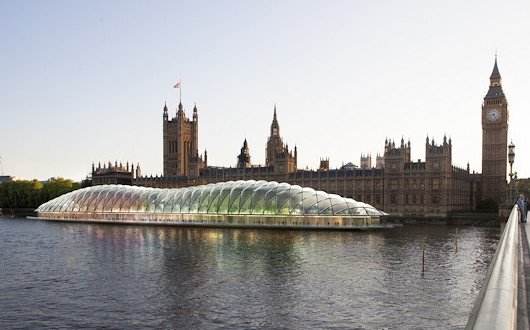
Gensler’s idea calls for a floating slug bearing a distinct resemblance to the Gherkin to be built and moored alongside the Palace of Westminster. This floating parliament would have plenary chambers for both the House of Lords and the House of Commons as well as committee rooms and other meeting places necessary to the functioning of the legislature.
While it’s a serious idea, the floating slug is not under actual consideration but is merely a conceptual exercise put out there by Gensler. Security concerns alone would lead to its rejection, not to mention worry over the hole in the historic fabric that would need to be punched through in order to access the slug. (more…)
All Change for Argentine Newspapers
BsAs Herald emerges as weekly as La Nación goes tabloid
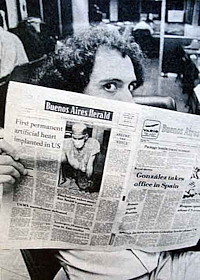
Not Lucas de Soto
One of the saddest pieces of news to hit the Cusackosphere in 2016 was word that the Buenos Aires Herald was ending its 140th year by moving from daily to weekly production. The English-language Herald has been a stalwart of its city and country and, though little known abroad, has ranked among the finest newspapers in the world. But from 2007, when Charleston’s Evening Post Publishing Company sold the Herald onwards to controversial businessman Sergio Szpolski, the paper found itself in increasingly chaotic situations. Robert Cox, Herald editor in the difficult period from 1968 to 1979, said what happened to the paper was “like a car crash”, and blamed the papers owners.
My favourite feature of the Herald was Martin Gambarotta’s weekly ‘Politics and Labour’ column — a witty and insightful peek behind the curtains of Argentine public life. Like Miriam Lord’s Dail sketches for the Irish Times, one wished it was possible to redeploy Gambarotta’s pen at will towards whichever corner of the globe one happened to be situated in.
As if that weren’t bad enough, the republic’s venerable broadsheet La Nación announced around the same time its conversion to a smaller compact size. The centre-right daily is the most prestigious in Argentina since the demise of La Prensa under Peronist persecution. While its weekend editions will maintain their broadsheet format, from Monday to Friday La Nación will be printed in a compact format similar in size to a tabloid.
Marcelo García’s explanation of the changes at the Herald can be found below. (more…)
Colonel Moore
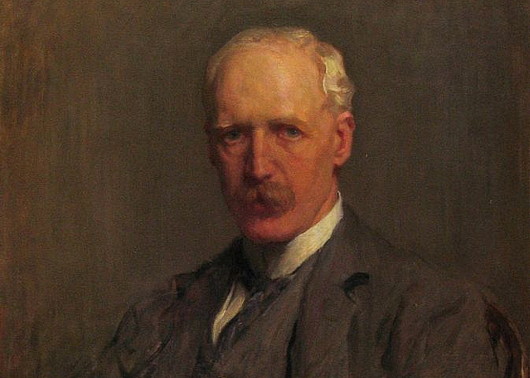
Senator Colonel Maurice George Moore, Companion of the Order of the Bath, is an understudied figure from that remarkable period of rapid transformation in Ireland’s political history. While certainly far from typical, Colonel Moore’s experience reflects the changing age rather well.
He was born in 1854 at Moore Hall in Co. Mayo where his family — English settlers who had converted to Catholicism — made their home. His father, George Henry Moore, was known as a kind landowner, and when his horse Coranna won the Chester Gold Cup during the height of the Great Famine, the £17,000 winnings were spent on giving each tenant a cow and importing thousands of tons of grain to relieve their hunger. During this dark period, not a single family was evicted from the Moore lands for non-payment of rent, and not a single Moore tenant died of hunger.
Younger son Maurice was educated locally before heading off to Sandhurst and was commissioned a lieutenant in the Connaught Rangers in 1874. The Ninth Xhosa War brought him to South Africa for the first time, also seeing action during the Anglo-Zulu War not much later. Promoted to captain in 1882 and major in 1893 it was the great Boer War (1899–1902) which transformed Moore’s entire world.
As a field commander Moore was highly regarded and proved himself capable at the Battles of Ladysmith, Colenso, Spioen Kop, and Vaal Krantz. His conduct in combat notwithstanding, Moore was appalled by the atrocities committed by his own side against the Boer civilian population — women and children herded into concentration camps where many starved to death while, just beyond the barbed-wire fences, British troops were exceptionally well provisioned. One wonders what effect the stories of the Great Hunger that took place just a few years before his own birth may have had on witnessing these horrible and frighteningly avoidable horrors.
With the Boers finally defeated, Moore ended up a colonel and was made a Companion of the Order of the Bath in honour of his achievements. In South Africa he became fluent in the Irish language having started to learn it from soldiers under his command. Back home in Ireland, Col Moore became active in promoting the study of Irish language and history, whether at evening schools on his family’s estates or in joining Conradh na Gaeilge and supporting compulsory Irish at the National University.
When Óglaigh na hÉireann — the Irish Volunteers (now Ireland’s defence force) — was founded in 1913 his military experience was judged useful and he was appointed to its provisional committee. He opposed Redmond’s takeover bid a year later but nonetheless followed him into the National Volunteers when the split did occur, the Redmondites putting themselves at the disposal of the British forces during the Great War. Colonel Moore’s final break with the constitutional nationalist leader came after the Easter Rising, and he joined Sinn Féin the following year. In 1918 his son Ulick was killed in action during the German’s spring offensive.
Given 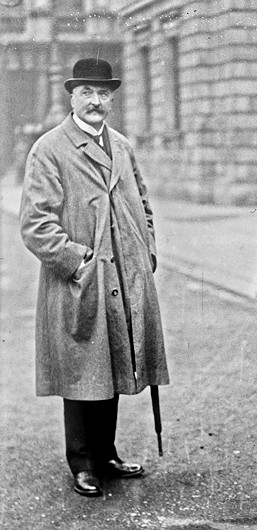 Col. Moore’s long experience in South Africa, Dail Éireann appointed him the secret Irish envoy to that country. With the creation of Seanad Éireann in 1922, Col. Moore was appointed a senator and began his legislative career which continued the entirety of the Free State Senate’s existence.
Col. Moore’s long experience in South Africa, Dail Éireann appointed him the secret Irish envoy to that country. With the creation of Seanad Éireann in 1922, Col. Moore was appointed a senator and began his legislative career which continued the entirety of the Free State Senate’s existence.
Starting out in Cosgrave’s ruling Cumann na nGaedheal party, Senator Moore quickly began to oppose the government policy. The Boundary Agreement late in 1925 provoked his defection to the new Clann Éireann (or People’s Party) when it was founded early on in 1926. Just two months later, in March 1926, de Valera founded Fianna Fáil which took on what little momentum Clann Éireann had. Once Dev’s efforts proved their worth at the ballot box in 1928, with voters electing eight Fianna Fáil senators, Col Moore sat with the party in Leinster House.
In 1932, the voters put Fianna Fáil in power for the first of many times and de Valera began his reshaping of the Irish state, culminating in the 1937 Constitution of Ireland that has stood the test of time. Significantly, Ireland is the only successor state to have emerged from the First World War to have preserved its constitutional democracy, and much of this is due to Dev’s instinctive conservative republicanism. When the Constitution came into effect in 1937, An Taoiseach appointed Col Moore to the newly constituted Seanad, and he continued to serve as a Senator up until his death in 1939.
Stockholm in the Swinging 60s
The Solemn Opening of the Riksdag was the state opening of Sweden’s parliament, seen here in a recording from 1960 during the reign of Gustaf Adolf. Years ago I wrote about Oskar II’s opening of parliament.
Alas, all this was done away with as part of the constitutional innovations of 1974, and the Swedish legislature is now opened with a much simpler ceremony.
via Karl-Gustel
1950s Ireland, the Church, and the Arts
Sitting in Dublin Airport waiting for a flight last week I picked up a copy of the Irish Arts Review which featured a number of interesting pieces (including something by our own Dr John Gilmartin).
Among the articles was an interview with the artist and printmaker Alice Hanratty (born 1939), a member of the Aosdána as well as of its governing council the Toscaireacht.
It was interviewer Brian McAvera’s question to Ms Hanratty about Ireland in the 40s and 50s and her response that proved most interesting.
BMcA: Artists, nevermind historians, often talk about the dark days of the 1940s and 1950s in Ireland: petty, parochial, restrictive, dominated by the Catholic Church, politically conservative and sexually repressed. How did you see this period and was it in any way formative for you as an artist?
AH: I have some experience of the period in question and don’t really recognise the description that you quote.
As far as the arts are concerned you must remember that important Irish poets, dramatists, and novelists, and also painters and sculptors worked at that time. Brian Fallon discusses all that in his An Age of Innocence. As for ‘politically conservative, restrictive, dominated by the Catholic Church’ these I think are quite sweeping statements by people who did not actually live at that time and are re-stating a received perception which is inaccurate.
As for domination by the Catholic Church, to some degree people allowed themselves to be dominated. They were OK with it. It suited them. It provided answers about the imponderables such as death. Nor should it ever be overlooked that the vicious war waged against the Irish people and the practice of their religion by way of the penal laws have had a huge detrimental effect on the national psyche which is not yet dispersed even in the 21st century.
As for political conservatism (don’t start me), that was established by the Free State Government in the 1920s making a deliberate and successful move to stamp out any form of socialism that might develop. Of course the Church was pleased to be of help there, but was not the instigator. President Higgins made reference to this period in one of his 1916 commemoration addresses, so anyone seeking enlightenment in these matters would find it there.
Were the 1940s and 1950s influential for me as an artist? No. I was too young and was not looking outwards for inspiration.
The angel of Görlitz
An anonymous benefactor gives Görlitz half a million euros every year for the benefit of the Old Town.
24.02.2015, by MONA JAEGER, GÖRLITZ (Frankfurter Allgemeine Zeitung)
PASTOR, YOU MUST know, are there angels? He jumped up, went to a shelf, grabbed a thin brochure, and opened it. Here, says Minister Hans-Wilhelm Pietz, pointing to a photograph of the Church of the Holy Trinity, the roof was leaking, it was almost raining. And there, at the Lutherkirche, the facade was washed-out.
Four houses of God are maintained by the Lutheran church in Görlitz, between 100 and 700 years old. From the crypt to the tower there is always something to bang, grind, or sand. Sometimes this costs 500 euro, sometimes 5,000. In any case more than the 2,500 congregants contribute to the Sunday collection. “Alone, we would be overwhelmed with the neverending renovations.” But there is indeed him. Or her. An angel, at least, Father Pietz is certain.
He must be a pretty fat angel. He distributes half a million euros in the city every year — €511,500 to be exact. Not an angel as such, but a wealthy entrepreneur or someone with a rich inheritance, the Görlitzers speculate at the bakery counter or at their Stammtisch. Who else would have had so much money left for twenty years that he could simply donate to the city?
For it’s been the same game in Görlitz every year for that long: always in the first quarter, without announcement, half a million euros (formerly a million marks) find their way into the municipal coffers. It has always been a different date. This year it was 18 February. Whether the money will come next year, the donor does not reveal. (more…)
Search
Instagram: @andcusack
Click here for my Instagram photos.Most Recent Posts
- Sag Harbor Cinema March 26, 2025
- Teutonic Takeover March 10, 2025
- Katalin Bánffy-Jelen, R.I.P. March 3, 2025
- Substack Cusackiensis March 3, 2025
- In the Courts of the Lord February 13, 2025
Most Recent Comments
Book Wishlist
Monthly Archives
Categories


